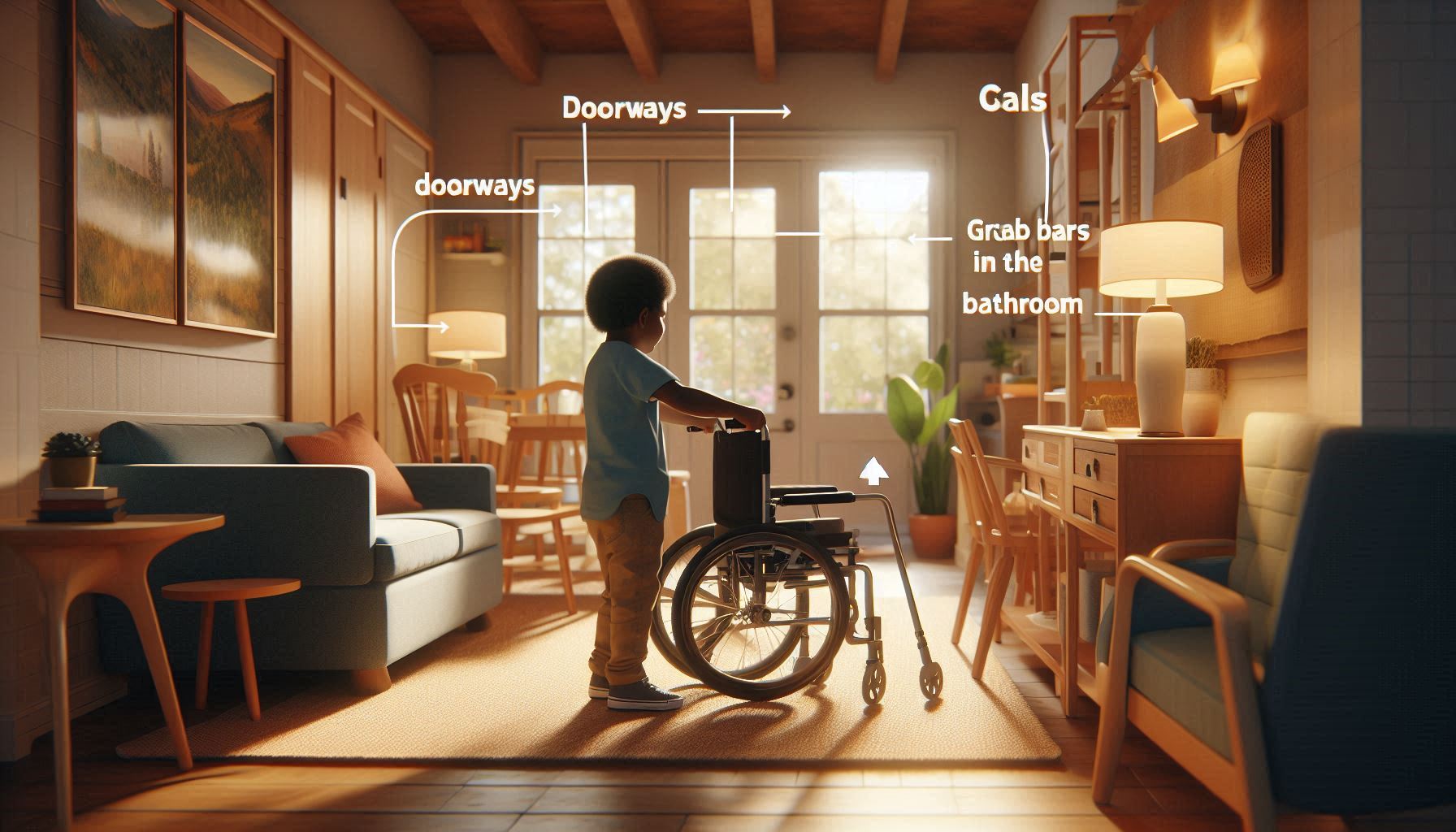M.E. Foundation INC © 2023 All rights reserved

Hello, caring parents and caregivers! An accessible home environment is crucial for supporting the independence and well-being of children with disabilities. By making thoughtful modifications and adaptations, you can create a safe, comfortable, and inclusive space that meets your child’s unique needs. In this guide, we’ll explore practical tips and strategies for creating an accessible home environment that promotes independence and enhances your child’s quality of life.
Before making any modifications, it’s essential to assess your home’s current accessibility. Consider your child’s specific needs and challenges. Conduct a room-by-room evaluation to identify areas that may require adjustments. Pay attention to entryways, hallways, bathrooms, and common living spaces to ensure they are easily navigable and safe.
Entryways can be a significant barrier for children with mobility challenges. Installing ramps and handrails can make your home more accessible. Ensure that ramps have a gentle slope and are wide enough to accommodate wheelchairs or walkers. Handrails should be sturdy and placed at an appropriate height for your child.
Narrow doorways can restrict movement for children who use mobility aids. Consider widening doorways to provide enough space for wheelchairs, walkers, or crutches. Pocket doors or sliding doors can be a space-saving alternative that also enhances accessibility.
Choose furniture that is adjustable and adaptive to meet your child’s needs. Consider height-adjustable tables and chairs, recliners with lift mechanisms, and beds with adjustable bases. Ensure that furniture placement allows for easy movement and access to essential items.
Keeping living spaces organized and clutter-free is crucial for safety and accessibility. Use storage solutions such as shelves, bins, and hooks to keep items off the floor. Labeling storage areas and using color-coded systems can help your child find and access their belongings independently.
Bathrooms can be particularly challenging for children with disabilities. Installing grab bars near the toilet, shower, and bathtub provides stability and support. Non-slip mats in the shower and on the bathroom floor can prevent slips and falls, enhancing safety.
Consider adaptive bathroom fixtures such as handheld shower-heads, adjustable shower seats, and raised toilet seats. These modifications can make daily hygiene routines more manageable and comfortable for your child. Ensure that faucets and handles are easy to operate.
Adaptive kitchen tools can empower your child to participate in meal preparation. Consider items such as ergonomic utensils, adjustable-height countertops, and lever-handled faucets. Adaptive tools make it easier for your child to engage in cooking and other kitchen activities.
Organize kitchen storage to ensure that essential items are within easy reach. Use pull-out shelves, lazy Susans, and clear storage containers to make it easier for your child to find and access kitchen supplies. Labeling shelves and containers can also aid in organization.
A sensory room can provide a calming and stimulating environment for children with sensory needs. Include items such as sensory lighting, weighted blankets, and tactile toys. A designated sensory space can offer a safe retreat for your child to relax and self-regulate.
Consider the sensory impact of your home environment. Use soft lighting, reduce noise levels, and choose calming colors for walls and decor. Ensure that sensory-friendly modifications are tailored to your child’s specific sensory preferences and needs.
Creating an accessible home environment is a meaningful way to support your child’s independence and well-being. By making thoughtful modifications to entryways, living spaces, bathrooms, and kitchens, you can create a safe and inclusive space that meets your child’s unique needs. Remember, accessibility is an ongoing process, and it’s essential to adapt and adjust as your child’s needs evolve. Your efforts will make a significant difference in enhancing your child’s quality of life and fostering their independence.
M.E. Foundation INC © 2023 All rights reserved